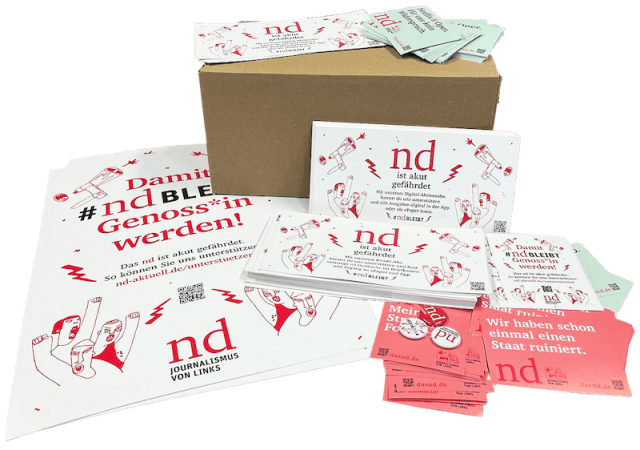Dimitrij Schaad runs and sits in the soul landscape of Falk Richter.
Photo: Gianmarco Bresadola(2)
There is a comeback and a debut. The actor Dimitrij Schaad is playing at the Berlin Schaubühne for the first time. At the beginning he introduces himself to the audience half ironically, half shyly: “Dimi: Schaubühne, Schaubühne: Dimi.” In recent years, Schaad has played leading roles in successful cinema productions such as the Kangaroo films based on Marc-Uwe Kling or most recently in “Sophia, Death and I”. He has been known to Berlin audiences for a long time, as he was one of the stars in the Maxim Gorki Theater ensemble until 2019. Falk Richter was also involved there, whose career had previously taken off here at Lehniner Platz with sensational works such as the piece “Fear,” which brought him into a long legal dispute with AfD politicians.
Over time, Richter’s texts have become more personal and intimate. Three years ago, the play “In my Room” was released at Gorki, in which the actors worked through their relationships with their fathers through monologues and music and struggled to understand their anger, sadness and silence. The new production can be seen as a continuation of this material, now with a focus on the author and director’s own biography. Schaad plays a judge, “The Silence” is an autofictional piece about growing up in an unhappy home.
nd.DieWoche – our weekly newsletter

With our weekly newsletter nd.DieWoche look at the most important topics of the week and read them Highlights our Saturday edition on Friday. Get your free subscription here.
The mother locked little Falk in a closet when he wasn’t “nice,” spied on him, and read his diaries. His father beat him when he realized he might be homosexual. His sister didn’t invite him to her wedding because they only wanted to celebrate “with the closest family circle.” In this inner circle there was no room for the imaginative boy who longed for art, for men, for a different life, one in which he would be heard and seen.
Schaad tells the story openly, with humor and charm, every now and then touching his face and breathing heavily to indicate sadness, then raises his voice and rages about the scandal of not being safe as a gay man in this society. Every now and then he plays small scenes, talks to his character’s partner on the phone, tries to persuade him to have an open relationship so as not to repeat the joyless patterns in which his parents were trapped. You enjoy watching and listening to him because Schaad is an honest actor, someone who doesn’t have to make a show out of someone else’s life, who can take a step back and remain present at the same time.
The stage: a barren mental landscape. Some boulders, red and black fringed carpets, a leafless tree, and a table on the side where Schaad sits and writes before crumpling up his drafts. Not without good reason, because the text stands out compared to the videos that repeatedly interrupt the monologue. Richter himself talks to his mother about her past and his own youth. Unlike in the play, here the accused and at the same time the pitied person can behave themselves. Richter also seems much more sensitive and likeable, appearing as a son who tries hard and has questions. And his mother – wide awake, tormented, trying to limit the damage – gets embroiled in contradictions. You can see tragically how she defends a self-image, how she clings to her own narrative of her life.
“The Silence” also follows successful Schaubühne productions by director Thomas Ostermeier. Here he adapted the bestseller “Return to Reims” by Didier Eribon and books by Édouard Louis. The two are among the best-known protagonists of a literature in which sociology and biography come together. By looking back at their own lives and dealing with their families, they draw attention to the social dynamics and political conditions that shape, enable and, in case of doubt, destroy existence.
Richter also follows this program; his piece is not a reckoning with his parents’ home, but is rather driven by an interest in knowledge. The question that needs to be clarified is why the parents were so cold, so suspicious and yet so disinterested. The assumption is that one’s own misfortune cannot simply be private or accidental; there must be something behind it. Richter has a hunch; he suspects transgenerational trauma as the reasons for his pain and that of his parents. His family never talked about the fact that his father went to the front when he was seventeen, never about the fact that his mother was his lover for several years, and that he hid her in an apartment when she was expecting a child.
Are the silence and the cold an expression of early injuries? Richter doesn’t hold back this solution to his own misfortune for long. The rest of the evening is an attempt to provide evidence, but one that can only benefit the son. Because the way the parents’ fate is told here – for example, the escape at the end of the war, during which the mother’s brother froze to death – it seems as if the suffering of the past is only significant insofar as it explains one’s own misfortune , gives it meaning.
This is reminiscent of depth psychological procedures, and accordingly Richter’s therapist, who Schaad plays in a wig at the end, ultimately corrects the situation. She asks him what he expects. »That your mother asks you to forgive her? That she relives all her childhood experiences with you? No, she won’t do that. Her mother cannot feel these feelings. The pain would flood her and her life would fall apart. That’s called resilience, it’s the only way she can protect herself. Here, at the end of the almost two-hour evening, the tide turns again in a surprising way. “The Silence” is no longer the story of a broken childhood, nor of a bad mother. But that of a woman who was at least able to save herself.
Next performances: December 5th, December 6th, December 7th, December 10th, December 11th, December 12th
#ndstays – Get active and order a promotional package

Regardless of whether it is pubs, cafés, festivals or other meeting places – we want to become more visible and reach everyone who values independent journalism with an attitude. We have put together a campaign package with stickers, flyers, posters and buttons that you can use to get active and support your newspaper.
To the promotional package
link sbobet judi bola judi bola pragmatic play
